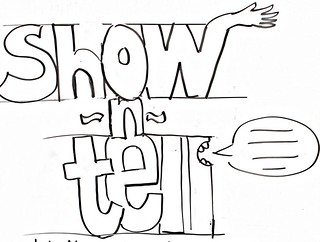 I read two short (Kindle) books last week: Show or Tell? A Powerful Lesson on a Crucial Writing Skill and Tell, Don’t Show! I’ve concluded that it’s really about showing and telling!
I read two short (Kindle) books last week: Show or Tell? A Powerful Lesson on a Crucial Writing Skill and Tell, Don’t Show! I’ve concluded that it’s really about showing and telling!
Show or Tell … is about distinguishing the difference between revealing and explaining (loc.107). Indeed, Thayer (2013) suggests it’s distinguishing between a strong and weak writer.
Examples of telling (or explaining):
- She speaks English well.
- He knew he would never make it to second base.
- We took a boat ride to Niagara Falls that hot, summer day.
Examples of showing (or revealing):
- The words rolled off her tongue as if each knew precisely when to act.
- As he rounded first base, he knew his aging knees would fail him if pushed too far.
- The tickling sensation of moister lightly coated our sweaty body as the ripple moved us through the panorama.
Janet Evanovich states that revealing allows the reader to discover by “bringing the characters to life” (loc. 124).
For creative writing, this book provides a concise overview of how to distinguish between telling and showing, and how one’s writing can vastly improve just by being able to distinguish between the two.
Tell, Don’t Show complements this idea quite well by focusing on the process of writing. Although the end goal is to show, when writing the first draft, telling can be used to keep the writing flow going. Lofquist (2013) claims that when drafting, writers tend to get bogged down in rich description (showing), while at the same time losing focus of the overall plot. The author suggests that when drafting a novel or story, it’s recommended to describe certain scenes by telling, so that one does not lose sight of the general flow of the storyline. Then, when working on the second, third, etc. draft, go back and add the rich description to those scenes by showing. The author admits that perhaps this approach does not work well for those who write novels “in one take”, but for most, writing is a process that would benefit well from taking a tell, then show approach.
I recommend reading both books together (as opposed to reading one or the other) as they complement each other, helping the creative writer get the most out of the writing process.